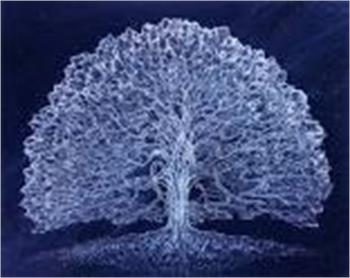 |
8 Enlightening Facts About the Winter Solstice
 |
1. It happens at a specific time
The winter solstice isn't the full day of Dec. 21, but rather occurs at a specific time. At that point, the sun is shining farthest to the south, directly over the Tropic of Capricorn. There's no duration to the event, per se. Paul Stokles, a meteorologist with the National Oceanic and Atmospheric Administration refers to the winter solstice as a "single event."
Of course, the sun isn't actually moving, the Earth is. At 12:11 p.m. ET, the North Pole is tipped about 23 degrees away from the sun. When summer rolls around, the South Pole is tipped 23 degrees away from the sun. During the vernal and autumnal equinoxes, the Earth is not tilted in either direction.
2. It happens at a different time each year
The winter solstice doesn't always occur on Dec. 21. Sometimes it comes on Dec. 22, which will happen again in 2015. The hour of day also fluctuates. Last year, the solstice came at 11:12 a.m. ET. Next year, it occurs at 11:03 p.m.
3. The meteorological winter began three weeks ago
If it feels like winter has already begun, you are correct. Meteorologists consider Dec. 1 the start of the meteorological winter and March 1 the start of the meteorological spring. That's because December, January and February are the three coldest months of the year. By the time the Spring Equinox rolls around on March 20, 2014, average temperatures in most areas will have already started rising. The winter solstice isn't the coldest day of the year, either — that comes later.
4. Last year at this time, some people thought the world was ending
Remember how the Mayan calendar supposedly said the world would end on Dec. 21, 2012? That was based on a reading of the end date of the Mayans' 5,126-year-long Mesoamerica Long Count Calendar, which corresponded to certain astronomical events, including the winter solstice.
5. There's no biblical justification for celebrating Christmas on Dec. 25
Though we picture the Three Wise Men visiting the baby Jesus in a manger in Bethlehem in the dead of winter, that's just a popular interpretation. There's nothing in the Bible that states what time of year that event occurred. Instead, some believe the Christian church chose the date to offset Saturnalia and Natalis Invicti celebrations that revolved around the winter solstice.
The ancient name for Christmas, Yule, may also have been derived from jól, the Scandinavian winter solstice festival that pre-dated Christmas. Christmas has also been celebrated in the past on March 28 and May 20, among other dates.
6. In some regions, the winter solstice is a short day, indeed
Nine and a half hours may seem like a short period of daylight, but consider the winter solstice in Iceland, where it doesn't get light until 10 a.m. and starts getting dark at 4:49 p.m. — that's about seven hours of daylight. Of course, in places further north, like Barrow, Alaska, there is no sunrise. In Nome, Alaska, sunrise comes at noon, and then there's four hours of light until sunset. If you want consistency, move to the equator, when sunrise and sunset are at around 6:30 a.m. and 6:30 p.m., respectively, all year round.
7. There's no proof that this is the most depressing time of the year
Many scientists believe that the paucity of sunlight during the winter months makes your brain deplete its stores of serotonin by requiring the pineal gland to convert it into melatonin, which makes you sleepy. However, some studies have found there aren't higher instances of winter sadness in countries like Norway vs. the U.S.
By : Todd Wasserman
Though there's an urban legend that the suicide rates are highest in Scandinavian countries, the actual list shows that — although the sparsely populated Greenland is No. 1 — South Korea, Guyana and China are far ahead of Norway, Sweden and Finland. Denmark, rated the happiest country in the world, also has just seven hours of daylight this time of year.
8. This isn't the day of the latest sunrise and earliest sunset
Most U.S. locations see their earliest sunset a week or so before the solstice and see their latest sunset sometime in January. For instance, in New York City, sunset came at 4:28 p.m. on Dec. 7, and then started occurring later. On Dec. 29, sunrise will come at 7:20 a.m. — the latest of the year. It won't start getting lighter earlier until Jan. 11.
1589 page views
|
|
|
|